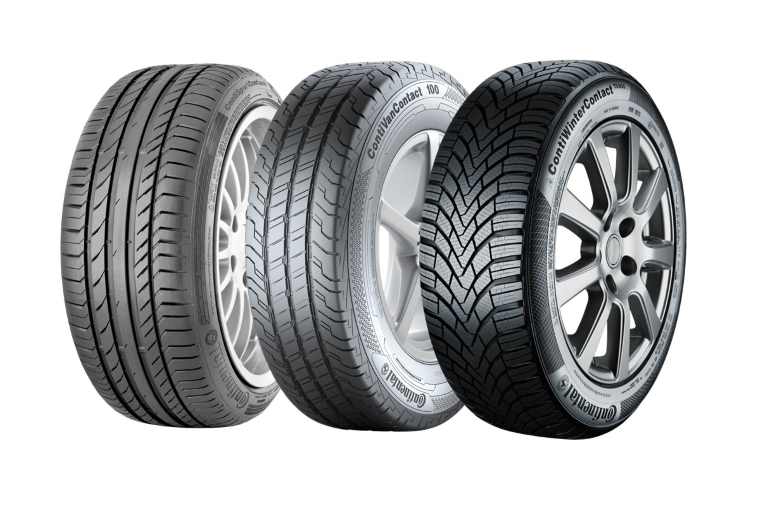Tyre Tread: what's the difference between asymmetric and directional tyres?
Bradley Jando | Tuesday 29th June 2021 10:00am

Youíd be forgiven for thinking that most car tyres are the same. They are all black, theyíre all made of rubber, and they all serve the same goal of getting your car from A to B. But take a closer look at the tread on your tyres and youíll see that the tread pattern on each tyre can be very different. There are literally hundreds of different tyres each with their own unique tread pattern Ė a collection of channels, sipes, and grooves which serve to provide grip, traction, and aquaplaning resistance. Tyre manufacturers will develop tread patterns to meet specific driver needs such as dry handling, wet braking, and even traction on snow and ice. However, each and every tyre will fall into one of three tread categories Ė asymmetric, directional, and multi-directional.
Asymmetric Tread pattern
Asymmetric tyres effectively mix two different tread patterns on the outer and inner edge of the tyre to provide a dual benefit to the driver. On the outside edge, the tread pattern exhibits large tread blocks which are designed to provide good dry traction and handling thanks to a larger contact area with the road. Meanwhile on the inside edge, the tread block is much smaller to provide better wet grip, and an increased number of grooves to help disperse water on wet roads and reduce the risk of aquaplaning. This effectively means the tyre is built to provide great all-round performance in both wet and dry conditions.
Asymmetric tyres can be placed on either side of the vehicle but the larger tread block must always be on the outside edge of the tyre in order to work effectively. Thatís why asymmetric tyres have words like OUTSIDE stamped on the sidewall to ensure they are fitted with the tread block facing the correct way.
Examples of Asymmetric tyres:
Pirelli P Zero
Continental Sport Contact 2
Multi-directional tread pattern
Multi-directional tyres are sometimes referred to as symmetrical tyres and, as the name implies, these tyres feature a tread block that is the same on the inner and outer side of the tyre.
This means the tyre can rotate in either direction and be fitted at any position on the vehicle without any loss in performance. Multi-directional tyres are usually less expensive due to their simpler tread design but are less able to adapt to changing road conditions like asymmetric tyres can. So while they offer excellent grip on dry roads, they may not be as effective in the wet as an asymmetric tyre.
Examples of multi-directional tyres:
Bridgestone R630
Arrowspeed CP661
Directional Tread pattern
Directional tyres will usually exhibit an arrowhead-like tread pattern which provides a very striking appearance. But there is more to directional tyres than just appealing looks. There is an obvious compromise when designing a tyre that works just as well rotating in either direction. Asymmetric tyres do just that and in some respects this limits their performance. Directional tyres are designed to rotate in a single direction and as a result they provide excellent wet weather performance and good directional stability. Because directional tyres offer excellent traction, they also perform well on snow covered roads. Thatís why many winter tyres have directional tread patterns.
Whereas asymmetrical tyres can be fitted on either side of the vehicle, directional tyres can only be rotated vertically (i.e. from front to back) otherwise the tread pattern will rotate in the wrong direction when mounted on a wheel on the other side of the car. An arrow printed on the tyre sidewall will show the required direction of travel which will also match the arrowhead shaped tread pattern.
Examples of directional tyres:
Goodyear Eagle F1 GSD3
Michelin CrossClimate+
Can you mix tread patterns?
It is recommended that you do not mix tread patterns on a single axle. For example, an asymmetric tyre wonít provide the same wet and dry handling benefits if its counterpart isnít the same type. Ideally for best results you should replace tyres with identical tyres to the ones you already have so that the tread design matches exactly. However if this isnít possible or you wish to change your tyre brand, you should make sure your replacement tyre has the same tread type as the other tyre on this axle. So if you have a directional tread pattern you should avoid replacing it with an asymmetric or multidirectional one, unless you intend to change both tyres on the axle.
Trust your tyre change to the experts
If you need a tyre change, trust it to the experts. Get in touch with your local Kwik Fit centre to book an appointment.
Any facts, figures and prices shown in our blog articles are correct at time of publication.
Featured Articles
Is it Illegal to Drive With One Headlight?
Saturday 19th July 2025
Wondering if itís illegal to drive with one headlight? Learn about the safety risks and penalties of illegal blown bulbs and why you should fix them promptly.
Air Con in EVs & Hybrids: Experts Answer Your Questions
Monday 30th June 2025
Does air con drain EV batteries? Can you use the air con while charging an electric car? Find out the answers to these questions & more from Kwik Fitís experts.
Why Is Your Car Making a Noise? Fixes & Tips
Friday 13th June 2025
When your car starts making unexpected noises, it can certainly be quite disconcerting; it may be nothing to worry about, but hereís what you need to know.









